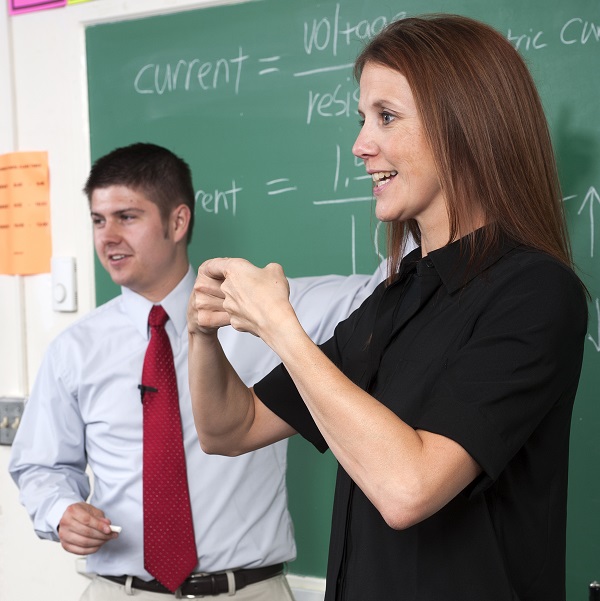School placements designed for children who are deaf or hard of hearing are available in many different forms. Below are descriptions of different types of designed placements for children with hearing needs.
Team-Taught Mainstream Classroom Instruction
In some classrooms children who are deaf or hard of hearing are team-taught by two teachers along with children who hear typically.
- The team usually consists of a mainstream teacher and a special education teacher or teacher of students who are deaf or hard of hearing.
- Teachers work together to meet the social, emotional, and academic needs of all the students with the special education teacher providing suggestions for curricular and instructional adaptations.

Resource Room Instruction
In some schools, resource rooms for children with various learning challenges (learning disabilities, speech and language, hearing loss) are used to serve some students who are deaf or hard-of-hearing.
- Students may be enrolled in resource room services for part or all of their school day.
- Part-day placement may be provided to assist the student with subject areas such as reading or language arts.
- Resource teachers need to know that the needs of children who are deaf or hard of hearing are often different than those with other special challenges.
- A teacher with certification in both special education and education of the deaf and hard of hearing or a consultant to the resource room teacher can be very important.
Self-Contained Classroom Instruction
Some public schools, especially in larger metropolitan areas, may offer self-contained classes for children who need special teaching most of the time.
- Opportunities are provided for mainstreaming socially or academically when the teacher feels that a child can learn best in that setting.
- Self-contained classes may use a variety of communication methods, even within a single classroom, depending on the needs of the children.
Day Schools
Day schools for children who are deaf or hard of hearing are different than public school programs because they usually are in separate buildings.
- Some day schools only work with young children, preparing them for a mainstream placement at a later time.
- Children who hear typically may be brought in as language models.
- Day schools may use a variety of communication methods, but typically have a stated communication philosophy: oral, total communication, bilingual/bicultural, or auditory/verbal.
- Information about some
private day schools that specialize in the development of listening and spoken language.
- Some programs offer tele-education services for families who live at a distance from their centers. Learn more
about telepractice here.
Residential Programs
Residential programs for children who are deaf or hard of hearing, serve students who need special programs, but live too far away to go home each afternoon.
- Many states have a State School for the Deaf.
For more information visit http://deafandhoh.com/directory/schools/ - Other residential schools are private, and some have been well known for many years.
- Residential schools may focus on developing Spoken Language, American Sign Language, or Bilingual-Bicultural education (written English and American Sign Language).